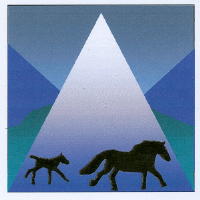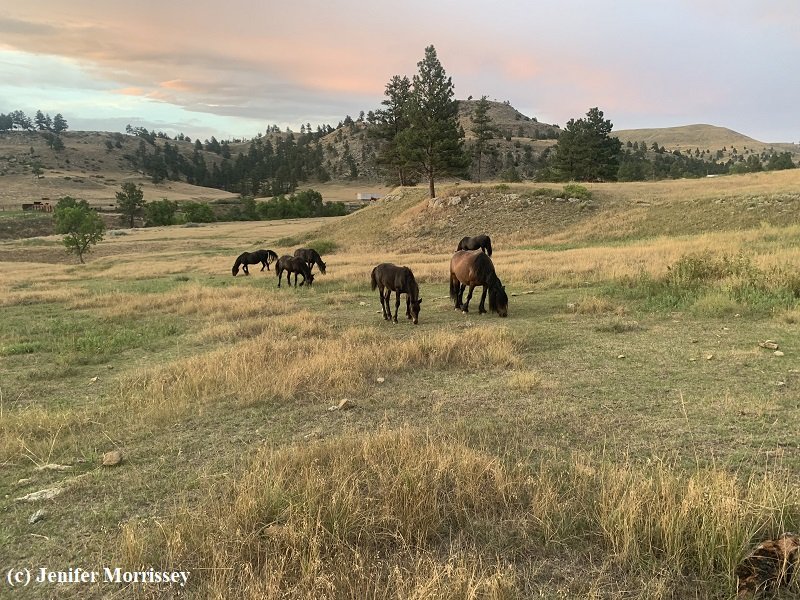Humbled by My Herd
/It happened again. And it reminded me of a twelve-hour period this summer when they did it twice. ‘It’ is my Fell Ponies making choices that lighten my chore load when they could easily choose differently. They leave me pleased, surprised, touched, and humbled.
My mares and foals came into the barn to eat the hay I had left for them, humbling me by then staying there until I returned to shut them in for the night.
Earlier this fall, we were going out to dinner, and I couldn’t find the mares with foals out on the hill before we left. I had been putting them out on the hill in the morning and in at night and then letting the open mare herd out at night and in during the day. I fed the open mare herd in their paddock then opened the gate to the other paddock where I spread hay in hopes that the mares with foals would come in while I was gone. When I returned after dark, the mares and foals had indeed come in, eaten the hay, and then stayed, despite the gate still being open to the hill. Of course, it wasn’t just me that was appreciative. So was the rest of the herd so they could go out for the night.
The next morning when I arrived at the barn, there was something odd about the area near the round bale of hay that I had been feeding out of. Some spoiled hay that I had set aside had been disturbed. Then I saw a pile of equine manure nearby. My mind immediately began wondering which pony was out and then how did they get out. The mares and foals were in the corral where I expected them to be, and I could see ponies in the draw near the barn on the hill pasture. I thought maybe they had breached the fence in the draw, but when I double-checked, all the open mares were also where they should be. It was very odd, then, to find manure near the hay bale. Surely it was one of the ponies and not someone else’s equine? Someone else’s equine would have had to travel miles to get to that spot, with lots of more interesting grazing in between. But how had one of my ponies gotten out of the pasture and who had put her back in?
The answer came an hour later when I was reminded that fence repair was underway on the cattle corrals on the other side of the barn. The repair work involved tearing out old fence and putting in new. Some of the fence along the pony pasture had indeed been torn out but had not yet been rebuilt. Then the gates to the lane from the corrals were open. Okay, that explained how a pony could have gotten out, but who had put them back in? That question remained unanswered.
Next I decided to check the fence repair project. Sure enough, there were pony tracks going through the opening in the fence and then through the cattle corral toward the lane. And then the unanswered question got answered. There were also tracks going in the opposite direction. The wandering pony or ponies had put themselves back where they were supposed to be. This was despite the availability of a hay bale and ungrazed grass and unexplored territory. This was despite needing to reverse a 50 yard venture that navigated two corrals and two gates, a distance of lane, plus the opening in the pasture fence. I found it remarkable that the escaped ponies had unescaped themselves.
I am humbled that my ponies, when they could choose to stay up on the hill where there is plenty of grass to graze, instead come to the barn when I need them to.
I pondered my mares coming in and staying in the night before and then a wandering pony putting themselves back where they were supposed to be after being out on an adventure. I progressed from being pleased to being surprised to being touched to being humbled. They had clearly made decisions with me in mind. They recognize my patterns of care for them and they were responding to them. It wasn’t just one pony; it was several of them, running in two different herds. I am obviously not telling them what to do or forcing them to do these things. They are choosing to do so just as they choose to follow the lead of a head mare on the pasture when they could do otherwise. They were acting as though I am a respected member of their herd. I am still pondering the implications of that honor.
Despite being more than two decades in, it’s a humbling experience sharing life with these ponies.
© Jenifer Morrissey, 2023


























































